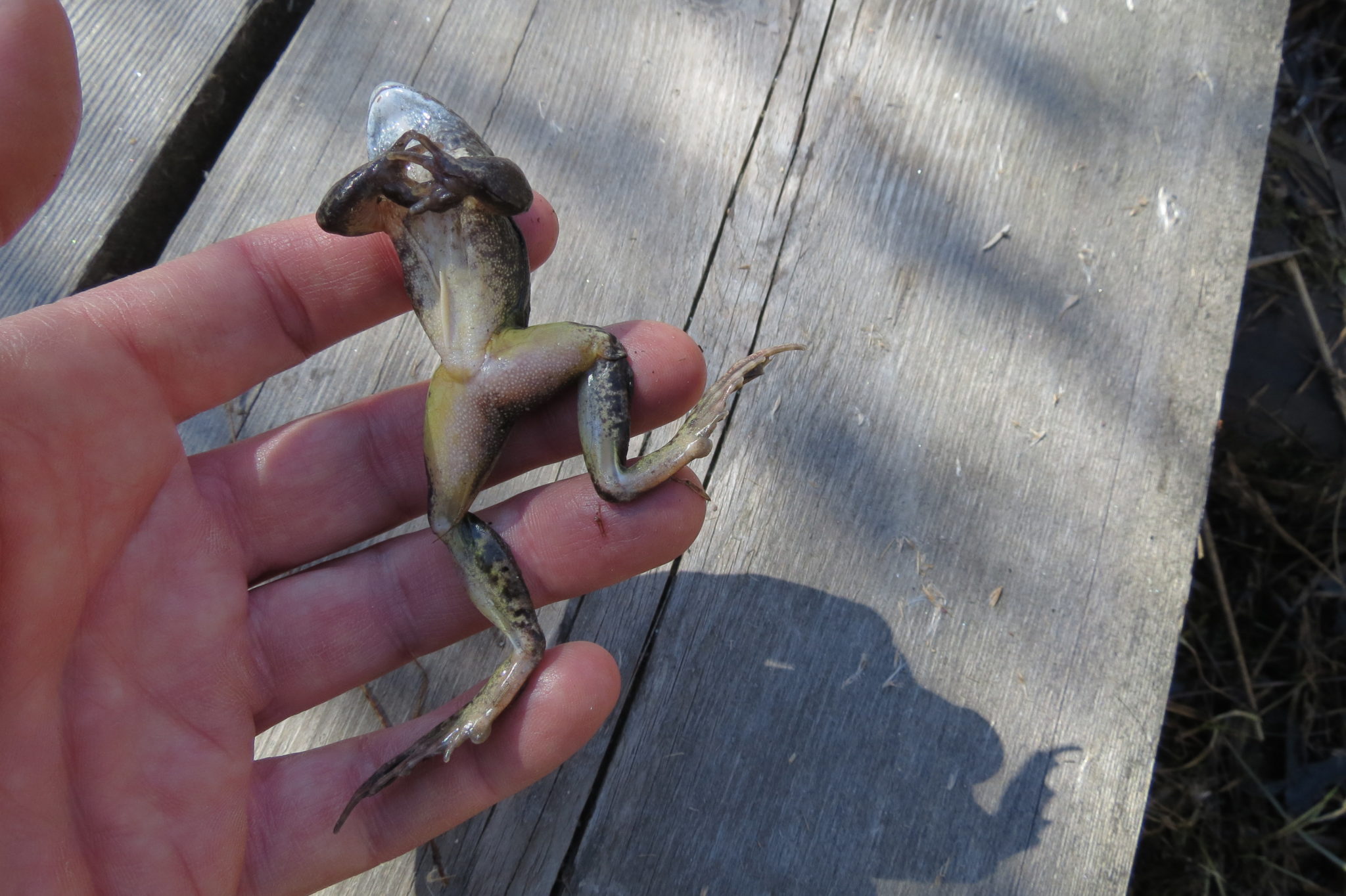The European common frog (Rana temporaria), also called the common frog, is the most common amphibian found in Finland. It can live in all kinds of habitats, as long as there is a suitable spawning pond, or even just a ditch or rocky puddle, somewhere nearby.
The common frog population closest to Helsinki city centre can be found on the island of Harakka. On the mainland, the closest frog spawning grounds to the city centre are the rocky ponds near Laakso Hospital.
The European common frog’s egg clusters typically contain over a thousand eggs. Spawning season is in mid-April. The tadpoles are herbivorous, developing into small frogs that emerge from the water on to dry land in July. The European common frog is a protected species.
The moor frog (Rana arvalis) prefers wetland habitats and is commonly found in coastal meadows and sea bays. The species is difficult to distinguish and its distribution is largely unknown. In Helsinki, it is found in Vanhankaupunginlahti, Laajasalo, Uutela and the areas annexed from Sipoo.
Its spawning season is in early May, slightly later than the European common frog’s. The moor frog’s spawning call is bubbly, like an empty bottle being submerged. The European common frog’s spawning call, on the other hand, is a low croak. The spawning call is the most distinguishing characteristic of the moor frog.
Without the spawning call, identification requires precision: the moor frog is smaller than the common frog, its stomach is usually uniformly light, and the so-called metatarsal tubercle near the inner rear toe is large and hard. The moor frog is a protected species.

Identifying a dead moor frog, photo Eero Haapanen.